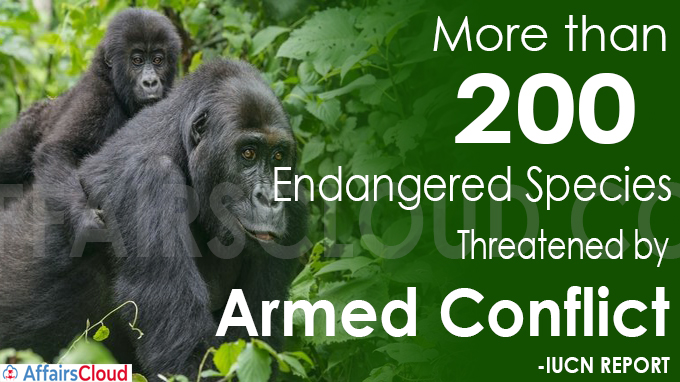
- Notable among them are the Critically-endangered Eastern Gorilla & Elephant populations.
- The report is the 1st in IUCN’s Nature in a globalised world report series.
- It examines the close relation between the environment and armed conflict,warning that human violence and unrest were taking a huge toll on nature.
Key Points
i.The report states that armed conflicts were particularly prevalent in some of the world’s most bio-diverse regions.
ii.The risks created due to civil unrest, war are ‘direct killing, killed for target practice & sometimes for food’. However, the biggest threat to the species was the undermining of conservation efforts.
iii.The report points out several instances in the past, during which animal species suffered from conflicts
- During the 1994 War in Rwanda – 90% of large mammals in the Akagera National Park were killed for food or trade.
- The conflicts in Sudan resulted in deaths of around 2, 000 elephants in 2007 alone.
- The acceleration of extinction of Javan Rhinoceros due to the Vietnam War.
iv.The report states that armed conflicts are most likely to erupt where there is less productive agricultural land, and where droughts are frequent.
v.The report lists several policy recommendations such as establishing safeguards for staff in protected areas, environmental defenders and other conservationists to reduce and prevent armed conflict.
- It calls for ‘sanctions’ against those committing ‘environmental war crimes’.
Recent Related News:
i.December 7, 2020, According to a report released by IUCN, India’s Western Ghats, inscribed by UNESCO in 2012 as a natural world heritage site, is threatened by population pressure, urbanization and climate change. The site is regarded as of significant concern.
About International Union for Conservation of Nature (IUCN):
President – Zhang Xinsheng
Director General – Bruno Oberle
Headquarters – Gland, Switzerland